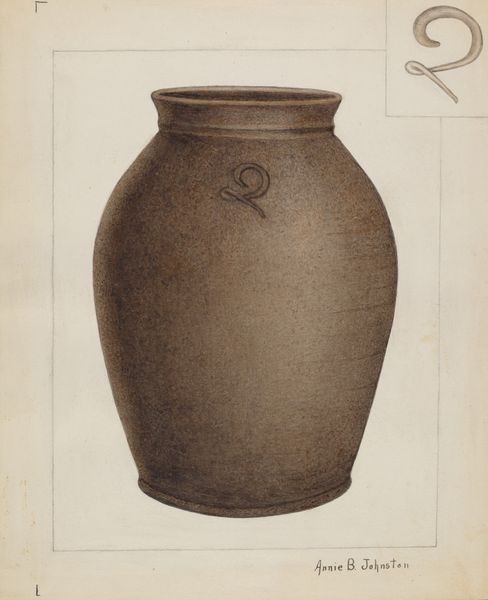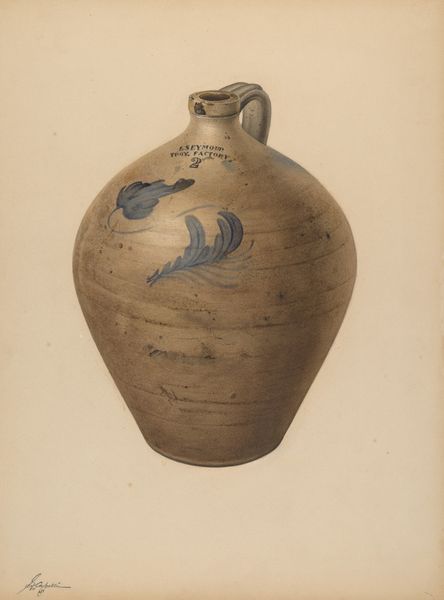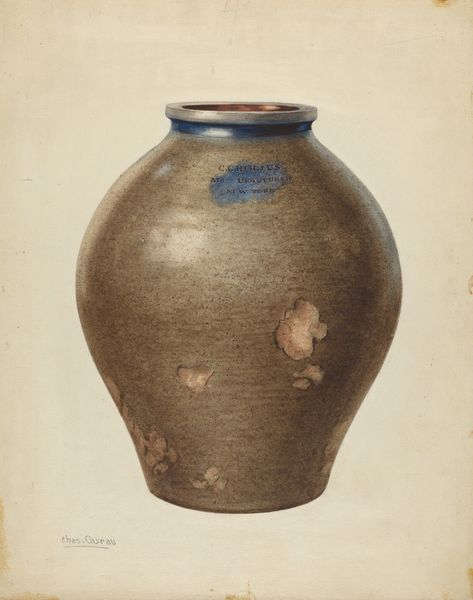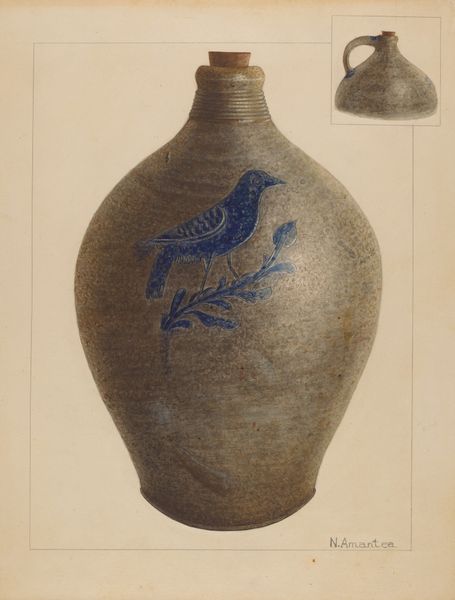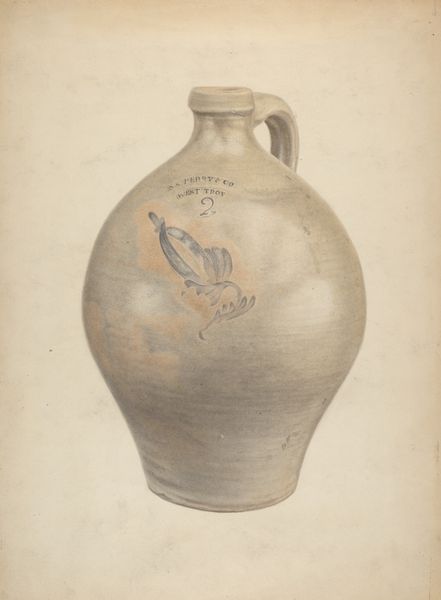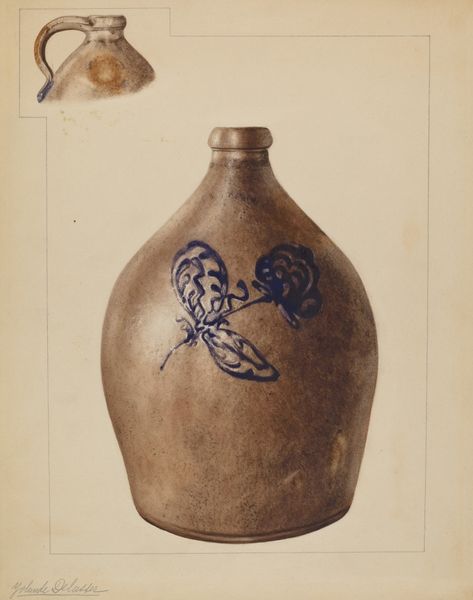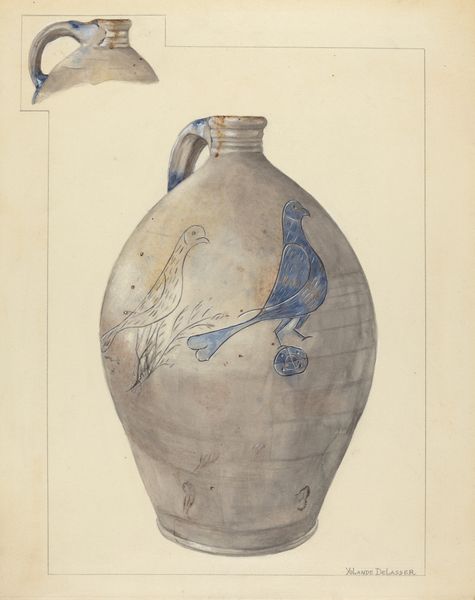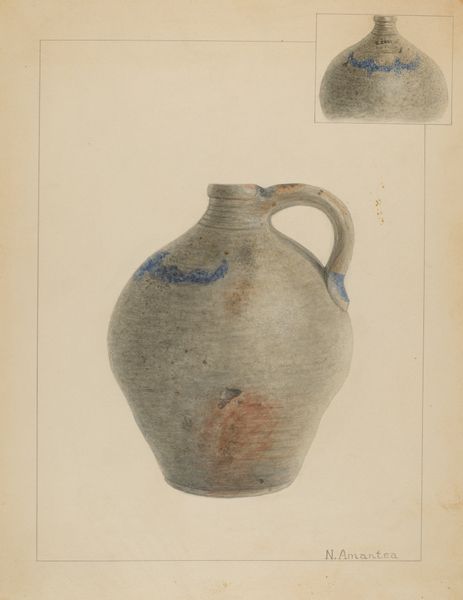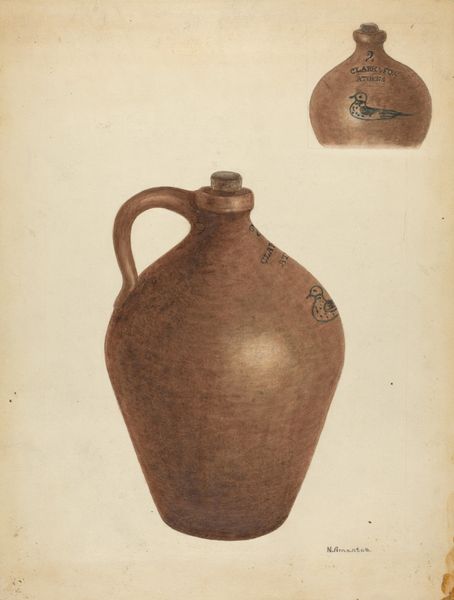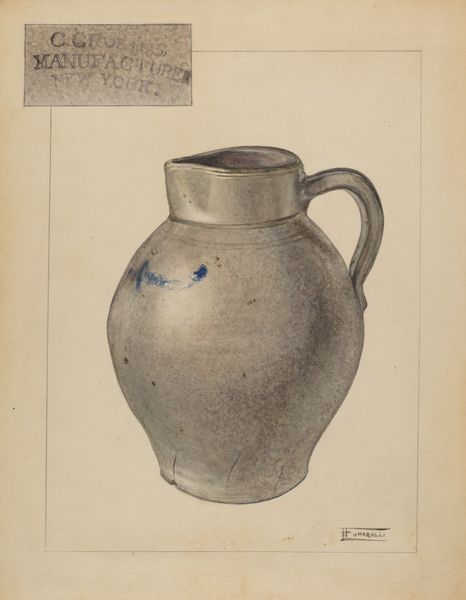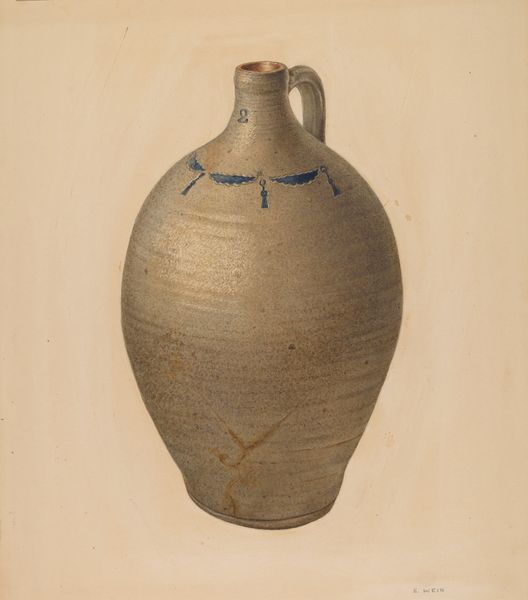
drawing, watercolor
#
drawing
#
charcoal drawing
#
figuration
#
watercolor
#
watercolour illustration
#
regionalism
#
watercolor
Dimensions: overall: 29 x 23.2 cm (11 7/16 x 9 1/8 in.) Original IAD Object: 5 1/2" Dia.(top) 6 1/2" Dia.(base)
Copyright: National Gallery of Art: CC0 1.0
Curator: Up next, we have "Crock," a watercolor and charcoal drawing created around 1936 by Nicholas Amantea. My initial feeling is wistful, looking at it. The softness of the watercolor gives it an almost dreamlike quality. Editor: Dreamlike, yes, and imbued with a kind of nostalgic stillness. The subject, this aged crock—its very form speaks of functionality, doesn't it? The way its painted bird, perched on a leaf, evokes themes of simple pleasures and pastoral existence that resonate with regionalist sentiments. Curator: Absolutely. That bird—for me, it feels almost like a small guardian. Is it a symbol lifted from local lore perhaps, a detail embedded in the community that would be instantly recognizable to them? Editor: Precisely! Birds in American art often symbolize freedom, spirit, or a connection to nature. And given that this crock bears the inscription "D. Goodale, Hartford," we can connect it to specific regional identity and perhaps even specific makers or merchants of the time. This drawing acts as more than just an image of a thing—it's a capsule, isn’t it? Holding social and cultural stories. Curator: It's curious how such a simple subject becomes complex as soon as you apply thought to it. I love how the imperfection on the crock in the drawing mimics the irregularities in human life—bumps, flaws, marks—evidence of history. It seems humble on the surface, but those perceived flaws almost elevate it to a deeper conversation. The artist isn’t merely documenting an object, but an entire existence. Editor: Those 'flaws' are actually vital, in that sense, revealing the very hands that shaped both the vessel and by extension the community. I love the tiny handle detail drawn to the upper right side; it adds to that intimacy, as it makes us see not only the crock as an object of practical application but to also regard that as an art form that enriches lived existence, giving beauty to everyday functional object. The material feels porous, soft even though it would not be so in reality, giving this work such depth and richness. Curator: Right, it seems Amantea invited us not only to look, but to feel the texture. "Crock," humble as its title suggests, holds volumes within its delicate lines. Editor: Exactly! In observing it we learn about a people and a time.
Comments
No comments
Be the first to comment and join the conversation on the ultimate creative platform.
